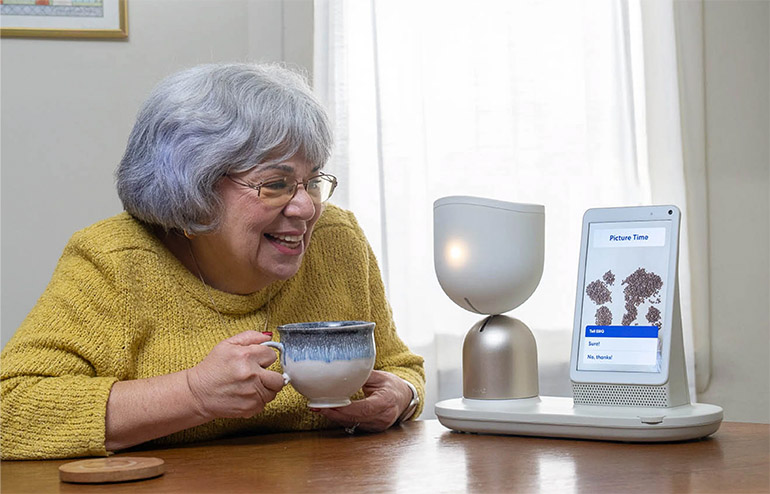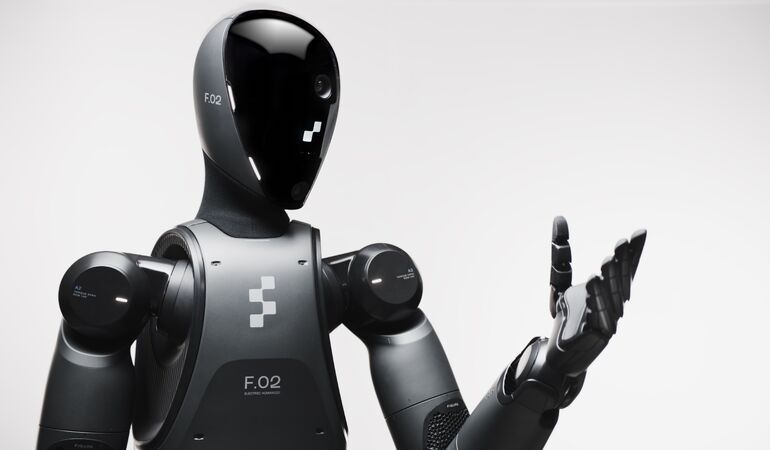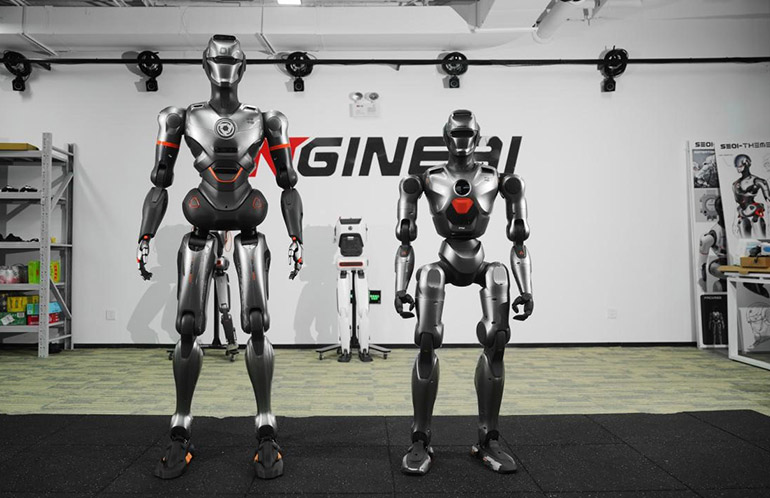
ElliQ user Gloria communicates with the robot to avoid loneliness on the CoBot-I-7 scale. Source: Intuition Robotics
While social robots have long promised to address conditions such as loneliness in older adults, there has been little formal proof until recently. A paper introduced the “CoBot-I-7” scale and found that Intuition Robotics Inc.’s ElliQ system can increase user’s sense of social connection and help with their emotional well-being.
Dr. Elizabeth Broadbent, an associate professor in health psychology at the University of Auckland, New Zealand, and Dr. Murali Doraiswamy, a physician expert on healthy aging at Duke University School of Medicine, co-authored a paper published in the Journal of Aging Research and Lifestyle. They found that 56% of users reported an increase in their connections with others, which suggests that robots can help people engage with one another rather than replace human contact.
“I’ve been doing research with robots and older people in the health area since about 2010,” Broadbent told The Robot Report. “We’ve primarily been looking at robots in retirement villages, and we’ve conducted quite a few experiments and enrolled people in trials.”
Intuition Robotics provides real-world data
Founded in 2016, Intuition Robotics has developed ElliQ, a tabletop system to interact with older adults and help them stay physically and socially active. The robot has a touchscreen, a moving multimedia display, and uses machine learning for context in ongoing verbal interactions.
Intuition Robotics has obtained funding from Woven Capital, Toyota Ventures, and other investors. The Palo Alto, Calif.-based company is working with partners such as the New York State Office for the Aging (NYSOFA) and the Area Agency on Aging of Broward County in Florida.
“This study was different in that it was primarily run by the company itself with 15 government organizations,” explained Broadbent. “What was good was that over 200 people were enrolled in it. That’s one of the largest studies that has been done so far with such robots.”
The CoBot-I-7 study was conducted over several months with randomized controls, she added. Unlike other studies, which have specific selection criteria such as certain cognitive conditions, this one had no such limitations and took place in people’s homes than during one laboratory visit.
Studies of social robots face hurdles
Loneliness can be as detrimental to health as smoking 15 cigarettes a day, according to Intuition Robotics. Why haven’t more studies been done of how robotics and artificial intelligence can affect the lives of older adults?
“One issue is the cost of robots,” Broadbent replied. “Academics like me can’t afford to buy a whole lot of robots and give them out to people. Even a robot like the Paro seal, which is relatively cheap, is still around $3,000 to $5,000. Unless you get a big grant, it’s quite expensive to give out a robot to 200 people.”
In the case of ElliQ, people were able to rent the robots and get compensation from the New York State government, she noted.
Other challenges to more study of how robots and AI can benefit users include limited grant periods, fears that robots might somehow replace human companionship, and the availability of tech support, said Broadbent.
ElliQ is better than a tablet on CoBot-I-7 scale
How are social robots different from, say, a tablet?
“We’ve done some research comparing a robot with a tablet and asking people to do relaxation activities and physical exercises,” Broadbent said. “People who were randomized to the robot were more likely to follow instructions.”
Even though the content was the same, users rated the robot as more competent and ascribed more positive personality characteristics because of ElliQ’s more anthropomorphic design, she added. They also had more social interactions with the robot than with a computer.
“From my studies, a lot of people say it’s like having another person in the house,” noted Broadbent. “This is true with even the most basic robots — users like being able to see and touch them.”
Generative AI raises personalization/privacy tradeoff
In the past year, generative artificial intelligence has boosted interest in human-machine interaction, but it is just beginning to be applied to social robots. In January, Intuition Robotics said it has integrated generative AI into ElliQ 3.
“In a lot of studies we’ve done in the past 10 years or so, people commented that their conversations were not personalized enough,” Broadbent said. “With new large language models [LLMs] and generative AI, robots can respond in a much more tailored way. It makes people feel like the robot is actually listening to them. This has huge implications for improving our relationships with robots through conversation.”
However, research into generative AI and human-robot interactions, such as for the CoBot-I-7 scale, must respect privacy and ethics guidelines.
“Review boards are quite strict,” said Broadbent. “If we’re using ChatGPT to help generate the conversation, we have to be careful about what data it going back to the company. It’s a tradeoff between privacy of information and tailoring the responses.”
The challenge in the coming years will be to build specialized data sets for more closed systems, she said. At the same time, the companies offering generative AI systems will have to address copyright and privacy concerns.
CoBot-I-7 results and next steps for ElliQ
“A large majority of people who replied to this survey said robots reduced their loneliness, was a good companion, and improved their quality of life,” said Broadbent. The researchers asked if ElliQ is a good companion and f it helped them connect with the outside world.
Broadbent said she would also like to collect CoBot-I-7 data on longer time frames to understand the human and robot relationships.
“Observational trials are still valuable,” Broadbent added. “The next step for ElliQ would be a randomized controlled trial — half with ElliQ and half with something else.”
Developers of social robots should focus on bringing down price, as well as on improving integration across different sources of data, such as from wearables and home sensors like doors, she said.

 5 months ago
79
5 months ago
79









 English (US) ·
English (US) ·